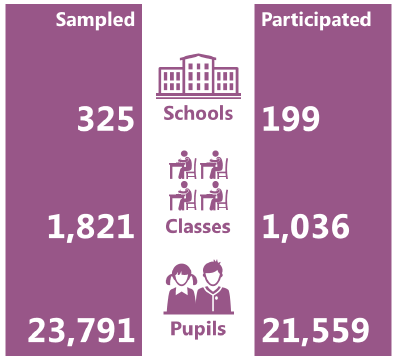Scottish Schools Adolescent Lifestyle and Substance Use Survey (SALSUS): smoking report 2018
Findings on smoking and e-cigarettes from the 2018 wave of the Scottish Schools Adolescent Lifestyle and Substance Use Survey (SALSUS).
This document is part of a collection
Executive Summary
Introduction
This report presents the smoking findings from the 2018 wave of the Scottish Schools Adolescent Lifestyle and Substance Use Survey (SALSUS). The research was commissioned by the Scottish Government and carried out by Ipsos MORI Scotland.
Survey background and purpose
SALSUS is a continuation of a long established series of national surveys on smoking, drinking and drug use. These were carried out jointly in Scotland and England between 1982 and 2000, to provide a national picture of young peoples' smoking (from 1982), drinking (from 1990), and drug use (from 1998) behaviours within the context of other lifestyle, health and social factors. Since 2002, Scotland has developed its own, more tailored survey, known as SALSUS.
About the survey
SALSUS is a self-completion survey administered by teachers in a mixed ability class, under exam conditions. In 2018, schools were encouraged to administer the survey online (but could administer it on paper if that was more feasible). Fieldwork was undertaken between September 2018 and April 2019.
Figure 1: Numbers sampled and participated

The overall response rate was 52% based on class and pupil response rate[1].
For full details of the methodology please see the accompanying SALSUS 2018 Technical Report.
Key findings
Prevalence and key trends
- Almost all 13 year olds were non-smokers (97%). 2% were regular smokers and 2% were occasional smokers. Smoking was more common among 15 year olds, but prevalence was still low: 7% were regular smokers and 6% were occasional smokers. 87% of 13 year olds and 70% of 15 year olds reported never having smoked.
- Smoking prevalence has decreased substantially over time, however, there were no statistically significant changes between 2015 and 2018.
- Among 15 year old regular smokers, the mean (average) number of cigarettes smoked in the last week was 50 for boys and 33 for girls. Since the mean can be affected by a relatively small number of pupils smoking a lot, it is also useful to look at the median number, which was much lower: 28 for boys and 21 for girls.
- The mean age that 15 year olds (who had ever smoked) had first smoked a cigarette (‘even just a puff’) was 13 years and 5 months, continuing a gradual increase in age of first smoking experience since 2008.
- Half of 15 year old regular smokers said they would find it ‘very’ or ‘fairly’ difficult to give up. Since 2002, more girls than boys report that they would find it difficult to give up. 29% of 15 year old regular smokers said they would like to give up smoking and over half (54%) of 15 year old regular smokers had previously tried to give up.
- 17% of 13 year olds and 35% of 15 year olds have ever used an e-cigarette. Boys were more likely to have tried an e-cigarette than girls. However, only a small proportion used them regularly: 2% of 13 year olds and 3% of 15 year olds. Smokers in both age groups were more likely than non-smokers to have ever used or regularly used an e-cigarette.
- From 2015 to 2018, there was a rise in the proportion of boys who had tried e-cigarettes across both age groups. However, regular use of e-cigarettes has not changed.
Availability and awareness of tobacco
- Among regular smokers, the most common sources of cigarettes were getting someone else to buy them and being given them. 13 year old regular smokers were almost twice as likely to buy cigarettes from others than buy them from shops.
- Girls were more likely than boys to be given cigarettes by friends or siblings. Boys were more likely than girls to buy cigarettes from the supermarket.
Attitudes to smoking
- 45% of 15 year olds thought it was ‘ok’ for someone their age to try smoking to see what it’s like, whereas 13 year olds were less likely to think this (19%). The proportion thinking it is ‘ok’ has risen slightly after falling markedly between 2006 and 2015. Among 15 year olds, girls were more likely than boys to think it was ‘ok’ to try smoking.
Contact
Email: salsus@gov.scot
There is a problem
Thanks for your feedback